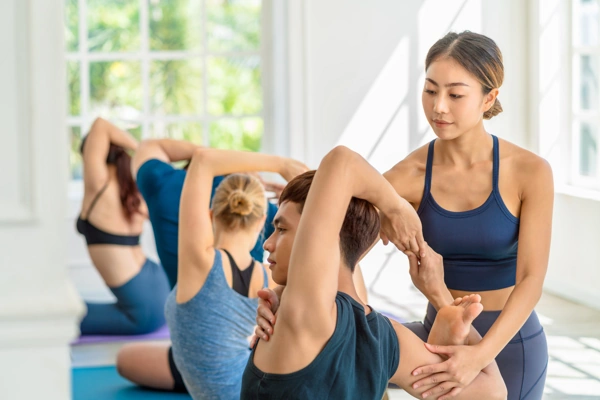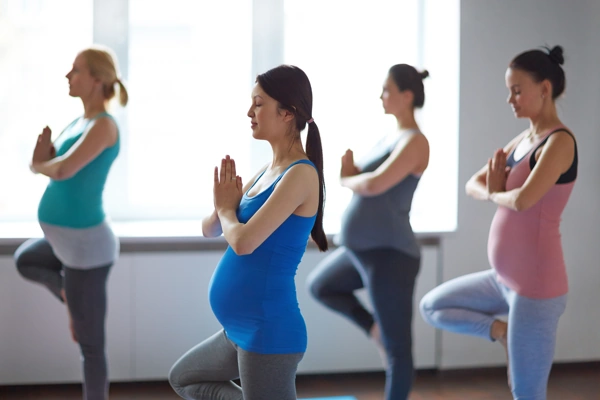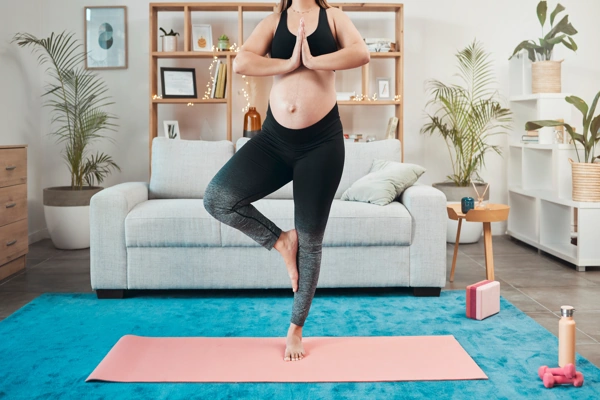Sleep is crucial for our overall health and wellbeing. It’s the time when our bodies recover and recharge for the next day. However, for many people, getting a good night’s sleep is a struggle.
Stress, anxiety, and an unhealthy lifestyle can all lead to sleep problems. Luckily, there’s an ancient practice that can help you sleep better – yoga. In this article, we’ll explore the benefits of yoga for better sleep, as well as as tips and techniques you can try tonight.
The Benefits of Yoga for Better Sleep
Yoga is a practice that’s been around for thousands of years. It’s a combination of physical postures, breathing exercises, and meditation that helps improve mental and physical health. When it comes to sleep, yoga offers several benefits, including:
- Reduces Stress and Anxiety: Yoga helps calm the mind and reduce stress and anxiety. When our minds are at peace, we’re more likely to fall asleep faster and stay asleep longer.
- Improves Sleep Quality: Yoga can help improve sleep quality by promoting deep, restful sleep. This, in turn, leads to improved energy levels, better focus, and overall improved wellbeing.
- Relaxes the Body: Yoga is a great way to relax the body and release tension. When we’re relaxed, we’re more likely to fall asleep quickly and stay asleep throughout the night.
Tips and Techniques for Better Sleep with Yoga
While some yoga poses are traditionally done for mindfulness or exercise, there are several yoga techniques and postures that are specifically designed to help you sleep better. Here are some tips and techniques to try tonight:
Yoga Poses for Better Sleep
- Child’s Pose (Balasana) – Child’s Pose is a relaxing posture that can help you wind down and prepare for sleep. Start on your hands and knees, then lower your hips back towards your heels while stretching your arms forward.
- Legs Up the Wall (Viparita Karani) – This posture is great for reducing stress and anxiety, and helping you fall asleep faster. Lie on your back with your legs resting against the wall.
- Corpse Pose (Savasana) – The Corpse Pose is the ultimate relaxation pose. Lie on your back with your arms and legs stretched out, and let your body completely relax.
- Supported Bridge Pose (Setu Bandha Sarvangasana) – This gentle, restorative pose is a great way to reduce stress and calm the mind before bedtime. Supported bridge pose helps to stretch the back and neck, improve circulation, and promote deep, restful sleep.
- Seated Forward Bend (Paschimottanasana) – This calming, restorative pose is a great way to stretch the hamstrings, relieve stress, and promote deep, restful sleep. Seated forward bend helps to calm the mind, reduce anxiety, and prepare the body for a peaceful night’s sleep. It’s a great choice for anyone looking to unwind before bedtime and get a better night’s sleep.
Breathing Exercises for Better Sleep
Breathing exercises are a simple but powerful way to calm the mind and promote deep, restful sleep. By slowing down the breath and focusing on the rhythm and sensation of inhaling and exhaling, breathing exercises can help to reduce stress, anxiety, and tension and promote a sense of calm and relaxation.
Here are three simple breathing exercises that you can try before bedtime to help you get a better night’s sleep:
Diaphragmatic Breathing
Diaphragmatic breathing is a deep, slow form of breathing that engages the diaphragm and helps to calm the mind and reduce stress. To practice diaphragmatic breathing, simply lie down in a comfortable position and place one hand on your belly. Breathe deeply, allowing your belly to rise and fall with each inhale and exhale. Focus on the sensation of the breath and try to slow down your breathing to a slow, steady pace.
Ujjayi Breathing
Ujjayi breathing is a calming breathing exercise that can help you sleep better. This is the most simple purposeful breathing technique. Simply focus on inhaling and exhaling deeply and evenly. Try to work up to counts of 7-10 seconds per inhale, and try to match that time with a controlled exhale.
Four-Seven-Eight Breathing
The 4-7-8 breathing exercise is designed to help you fall asleep faster. Breathe in for four counts, hold for seven counts, then exhale for eight counts. Repeat this pattern several times.
Alternate Nostril Breathing
Alternate nostril breathing is a simple but powerful breathing exercise that can help to calm the mind and reduce stress.
To practice this exercise, sit comfortably with your eyes closed and place your right thumb over your right nostril. Inhale deeply through your left nostril, then close both nostrils and hold your breath for a moment. Release your right thumb and exhale through your right nostril. Then inhale through your right nostril, close both nostrils, and exhale through your left nostril.
Repeat this pattern several times, focusing on the sensation of the breath and trying to slow down your breathing with each cycle.
By incorporating these breathing exercises into your bedtime routine, you can help to reduce stress, calm the mind, and promote deep, restful sleep. So why not give them a try tonight and see the difference for yourself?
Meditation for Better Sleep: The 1-2 Punch for Restorative Sleep
Meditation can be the perfect addition to your yoga practice to help you fall asleep more easily, and stay in a deep, restorative sleep longer. Here are our top 2 preferred meditation techniques for better sleep:

Body Scan Meditation
Body scan meditation is a mindfulness practice that involves focusing on the sensations of the body in a non-judgmental manner. This type of meditation is designed to help individuals become more aware of their physical sensations and to release physical tension in the body.
The practice typically involves lying down or sitting comfortably and focusing on one area of the body at a time, noticing any sensations or physical feelings that may be present. The focus then moves to the next area of the body, until the entire body has been scanned.
Body scan meditation can help to reduce stress, anxiety and improve sleep. It can also help individuals develop greater body awareness and reduce chronic pain. Additionally, this practice can enhance overall well-being by promoting relaxation and increasing the release of endorphins, the body’s natural pain relievers.
Guided Meditation
Guided meditation is a type of meditation where you listen to a recording of someone guiding you through a meditation. You can choose guided meditations that are specifically meant to help with sleep.
As you follow the prompts and instructions from the “guide,” your body and mind should begin to relax. This can help you relax and fall asleep faster.
Need a little help getting into the right HeadSpace for meditating, try the app now!
conclusion
Yoga is an ancient mind-body enhancement practice that offers several benefits for sleep. Whether you’re struggling with stress and anxiety, or just want to improve your sleep quality, yoga has something to offer.
Adding relaxation and breathing to your yoga can enhance sleep even more. Try incorporating yoga into your bedtime routine, and experience the benefits for yourself.
Whether you choose to try yoga poses, breathing exercises, or meditation…or all 3, you’ll be on your way to a more relaxed, restful night’s sleep.
Make sure to find a good yoga instructor, whether it’s for in-person classes or online. With its ability to reduce stress and anxiety, relax the body, and promote deep, restful sleep, yoga is an effective tool for anyone looking to improve their sleep. So why not give it a try tonight and experience the benefits for yourself?
FAQ’s
How often should I do yoga for better sleep?
You can practice yoga for better sleep as often as you like. Some people find that practicing yoga every day helps them sleep better, while others may only need to practice a few times a week. It all depends on your individual needs and preferences.
Is it better to practice yoga in the morning or at night for better sleep?
For most people, practicing yoga in the morning helps them start the day off on a calm and centered note, but still have a bit of energy for the day. So, it is recommended that for deep, restorative sleep, you should practice yoga at night as a way to wind down and prepare for sleep. But, ultimately, the best time to practice yoga for better sleep is whenever it works best for you.
Can yoga be used to treat insomnia?
Yes, yoga can be used to treat insomnia. By reducing stress and anxiety, relaxing the body, and promoting deep, restful sleep, yoga can help alleviate the symptoms of insomnia. However, if you’re experiencing chronic sleep problems, it’s always best to speak with a doctor to rule out any underlying medical conditions.




